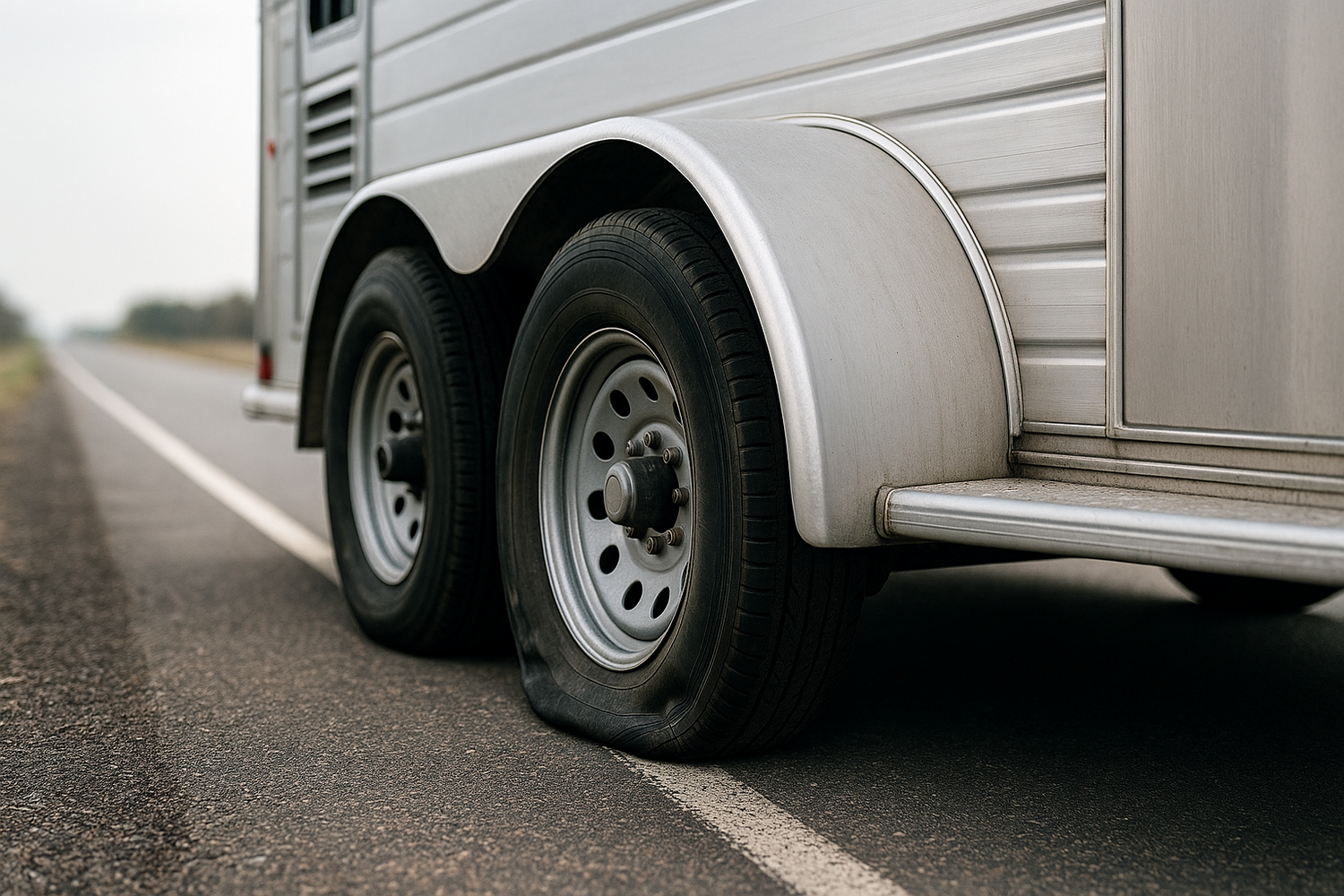Maintaining the correct tire pressure on your trailer is crucial for ensuring safety and optimal performance on the road. **Proper tire pressure** not only enhances the handling and stability of your trailer but also significantly reduces the risk of tire blowouts, which can lead to catastrophic accidents.
When trailer tires are under-inflated, they can overheat, leading to premature wear and potential failure. Conversely, over-inflation can result in a harsh ride and decreased traction. Therefore, it's essential to regularly monitor and adjust the tire pressure to the manufacturer's specifications, which can usually be found on a sticker located on the trailer itself.
Here are some key reasons why understanding and checking trailer tire pressure is vital:
- Enhanced Safety: Correct tire pressure helps maintain optimal contact with the road, reducing the likelihood of skidding or losing control.
- Improved Fuel Efficiency: Properly inflated tires reduce rolling resistance, which can lead to better fuel economy.
- Extended Tire Life: Regular checks can prevent uneven wear and prolong the life of your tires.
- Load Capacity: Incorrect tire pressure can affect how much weight your trailer can safely carry.
Tow with peace of mind, knowing that trailerwatchdog is standing guard.
Tools Needed to Check Trailer Tire Pressure

To effectively check the tire pressure of your trailer, having the right tools on hand is essential. This not only simplifies the process but also ensures accurate readings, contributing to safety and performance. Here’s a list of the tools you should consider:
- Tire Pressure Gauge: A reliable tire pressure gauge is the cornerstone of checking tire pressure. There are various types available, including digital, analog, and stick gauges. Digital gauges tend to provide the most accurate readings and are often easier to read.
- Air Compressor: An air compressor is useful for inflating tires to the correct pressure. Portable models are convenient and can be powered by your vehicle’s 12V outlet.
- Valve Stem Tool: This handy tool can help you remove valve caps easily and can assist in adjusting pressure if necessary.
- Cleaning Cloth: Keeping your tire and valve stem clean ensures accurate readings. A simple cloth can help wipe away dirt and debris before checking pressure.
Having these tools ready before you hit the road can save you time and trouble. Regular checks with the right equipment will help ensure that your trailer is always in optimal condition for towing.
Step-by-Step Process to Check Tire Pressure

Knowing how to check trailer tire pressure is crucial for safe towing and optimal performance. Follow this step-by-step process to ensure you get accurate results:
- Prepare Your Tools: Gather all the tools needed for the job, including your tire pressure gauge, air compressor, and cleaning cloth.
- Ensure Tires are Cold: For the most accurate reading, check tire pressure when the tires are cold, ideally after the trailer has been parked for at least three hours.
- Remove Valve Caps: Use your valve stem tool or just your fingers to carefully remove the valve caps from each tire. Place them in a safe spot so they don’t get lost.
- Check Pressure: Take your tire pressure gauge and firmly press it onto the valve stem. Make sure to press down quickly to avoid air escaping. Read the gauge immediately to get the pressure reading.
- Compare with Recommended Pressure: Check the reading against the manufacturer’s recommended tire pressure, usually found on a sticker inside the trailer door or in the owner’s manual.
- Inflate if Necessary: If the pressure is low, use your air compressor to inflate the tire to the recommended level. Recheck the pressure after inflating to ensure accuracy.
- Replace Valve Caps: After checking and adjusting tire pressures, put the valve caps back on securely to prevent dirt and moisture from entering.
Following these steps will help maintain your trailer’s tire health and enhance safety on the road.
Interpreting Tire Pressure Readings Accurately
Interpreting tire pressure readings accurately is essential for maintaining the safety and performance of your trailer. Here are some key points to consider when analyzing your tire pressure results:
- Understanding PSI: The pressure in tires is measured in pounds per square inch (PSI). Each trailer tire will have a recommended PSI listed on the sidewall, which is the ideal pressure for optimal performance.
- Reading the Gauge: Tire pressure gauges can be analog or digital. Ensure you are familiar with your gauge type; analog gauges often have a needle pointing to the PSI reading, while digital gauges display the reading on a screen.
- Low Pressure Indicators: If your reading is below the recommended PSI, this indicates low tire pressure, which can lead to increased tire wear, overheating, and potential blowouts. Regular checks are crucial.
- High Pressure Indicators: Conversely, if the reading exceeds the recommended PSI, it may lead to a harsh ride and increased risk of tire damage. Over-inflation can also cause reduced traction.
- Temperature Effects: Remember that tire pressure can fluctuate with temperature changes. As a general rule, for every 10°F change in temperature, tire pressure can increase or decrease by about 1 PSI. Always account for temperature when checking pressure.
By understanding these factors, you can interpret your tire pressure readings with confidence, ensuring that your trailer remains safe and efficient on the road.
Common Mistakes When Checking Tire Pressure

When it comes to maintaining your trailer's tires, checking the tire pressure accurately is crucial, yet common mistakes can lead to serious safety issues. Here are some frequent errors to avoid:
- Neglecting to Check When Cold: One of the biggest mistakes is checking tire pressure when the tires are hot. Driving heats up the tires and can inflate the PSI reading. Always check your tire pressure when the tires are cold for the most accurate measurement.
- Using an Inaccurate Gauge: An unreliable tire pressure gauge can provide misleading readings. Ensure that you use a calibrated and high-quality gauge to get the best results. Regularly test your gauge against a known accurate one.
- Ignoring Manufacturer Recommendations: Each tire has a specific PSI rating determined by the manufacturer. Failing to adhere to these recommendations can lead to under-inflation or over-inflation, both of which can be dangerous.
- Overlooking the Spare Tire: Many trailer owners remember to check the main tires but forget about the spare. It’s just as important to maintain proper pressure in your spare tire, as it may be needed in an emergency.
- Not Regularly Checking Pressure: Some may only check tire pressure infrequently, leading to undetected issues. Make it a habit to check your tire pressure at least once a month and before long trips.
Avoiding these common mistakes can help ensure that your trailer remains safe and roadworthy, significantly reducing the risk of tire-related incidents.
Maintaining Proper Tire Pressure for Safety

Maintaining proper tire pressure is not just a routine check; it's a critical aspect of ensuring the safety and performance of your trailer. Properly inflated tires enhance fuel efficiency, improve handling, and extend tire life, which ultimately contributes to a smoother and safer ride.
To maintain the ideal tire pressure:
- Regular Inspections: Make it a habit to check your trailer’s tire pressure at least once a month and before any long trips. Consistency is key to catching any potential issues early on.
- Adjust for Load: If you’re carrying a heavier load, remember that you may need to adjust your tire pressure accordingly. Consult your owner’s manual for guidelines on load adjustments.
- Monitor Changes in Temperature: Tire pressure can fluctuate with temperature changes. Keep an eye on the forecast, as colder temperatures can decrease tire pressure, while warmer weather can increase it.
- Utilize Technology: Investing in a tire monitoring system can provide real-time data about your tire pressure and temperature. This proactive approach helps prevent unexpected tire failures.
By following these guidelines, you can significantly enhance your safety on the road and ensure that your trailer performs at its best. Tow with peace of mind, knowing that trailerwatchdog is standing guard.








